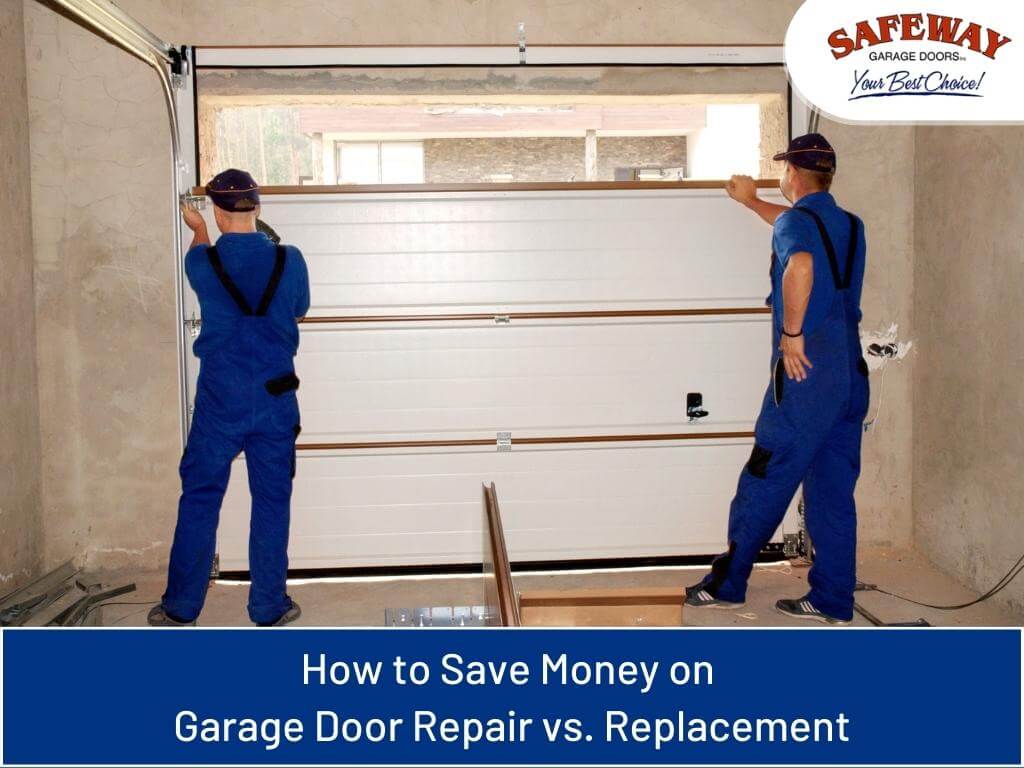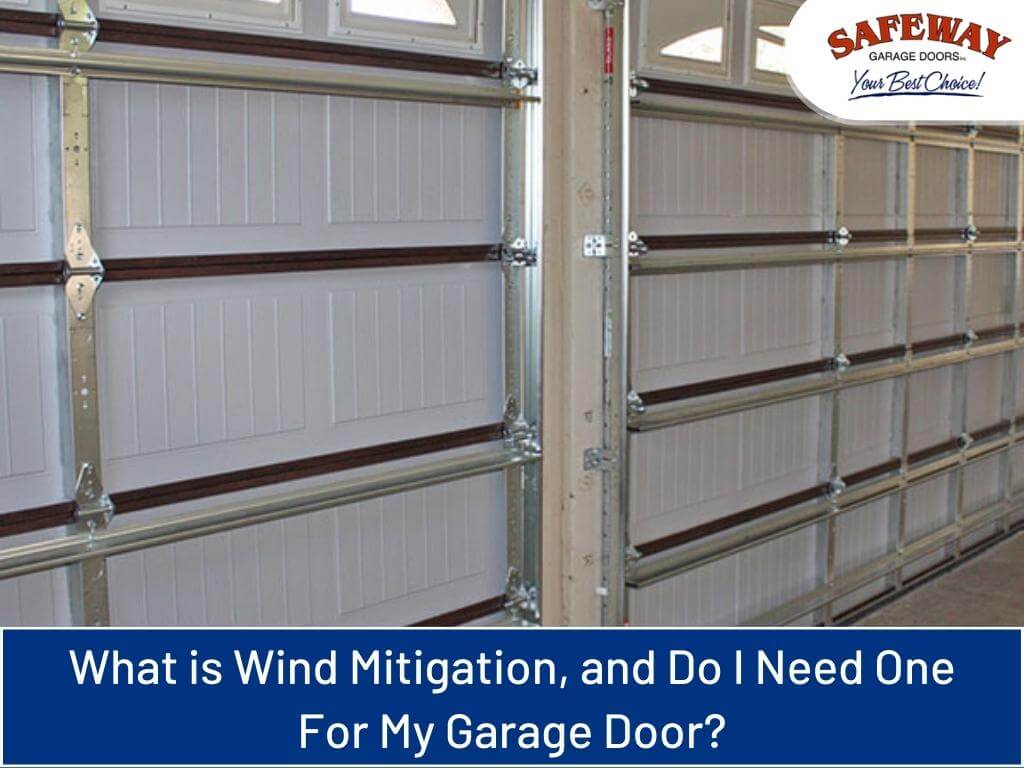12 Tips to Make Your Garage Door Last Longer
- 1. Maintain Garage Door Hardware
- 2. Inspect for Loose Bolts and Hardware
- 3. Maintain the Weatherstripping
- 4. Replace Worn-out Parts
- 5. Keep the Tracks Clean
- 6. Test the Auto-Reverse
- 7. Don’t Force the Door Open
- 8. Balance the Door
- 9. Keep Garage Door Opener System in Good Condition
- 10. Protect Against Harsh Weather
- 11. Clean the Front of Your Garage Door
- 12. Schedule Professional Inspections
- Conclusion
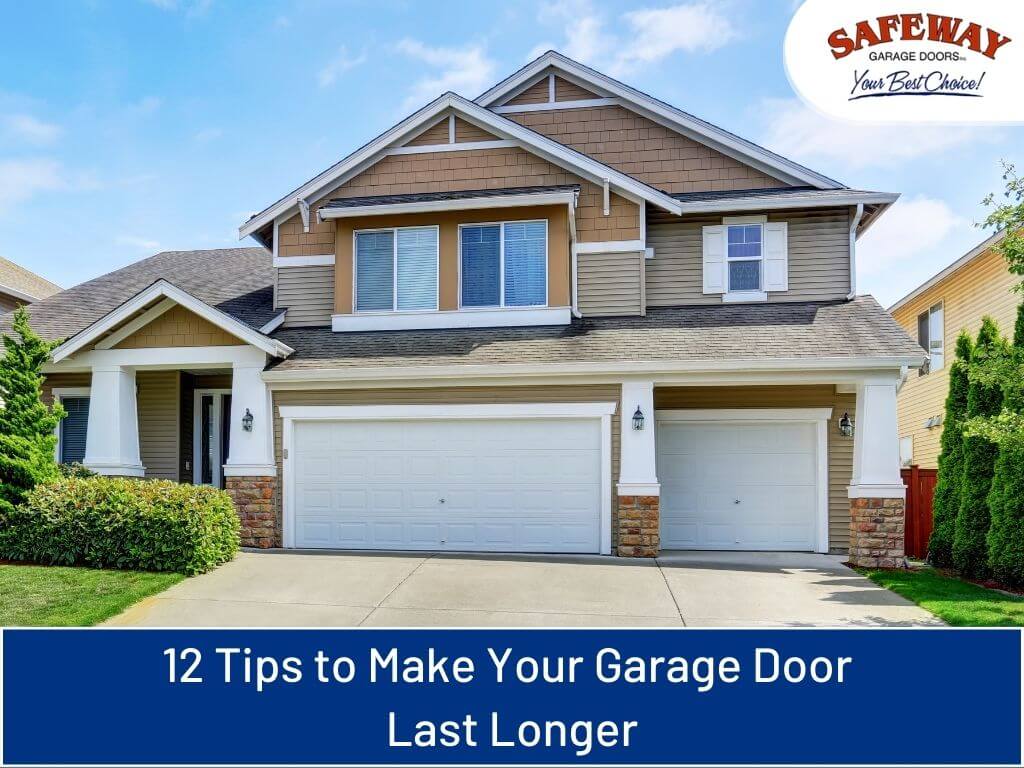
Your garage door is more than just an entryway to your home; it serves as a shield, protecting your belongings and providing security for your property. As one of the largest moving parts in your home, your garage door should be well-maintained to ensure it lasts as long as possible.
Ever wondered how long garage doors tend to last? On average, a garage door can last anywhere from 15 to 30 years. Of course, this varies based on the quality of materials and maintenance, so be sure to check with your garage door repair and maintenance experts to ensure yours is in good shape. 😉
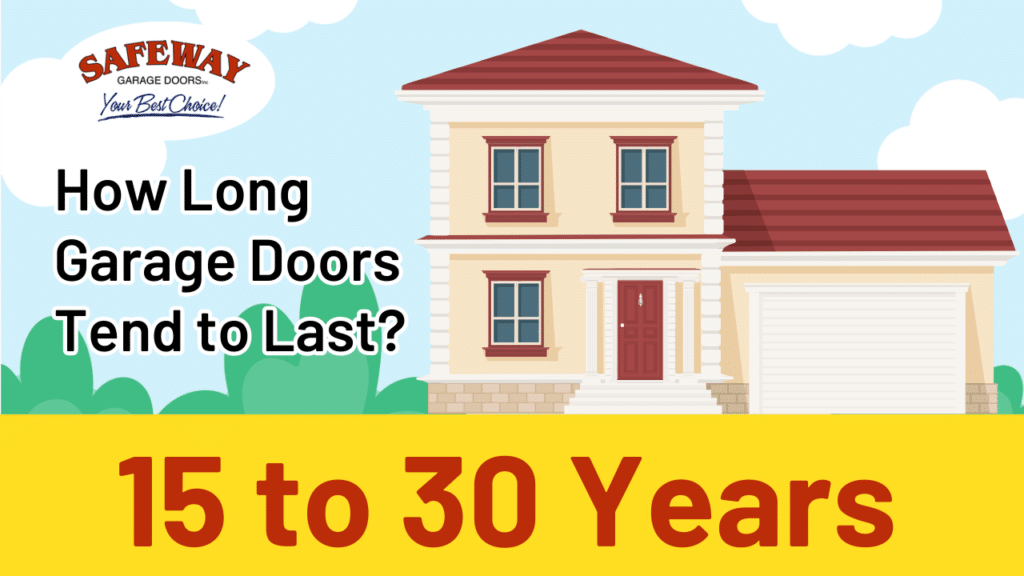
Although you may not require garage door assistance immediately, familiarising yourself with these twelve proactive measures can help your garage door serve you reliably for many years to come.
1. Maintain Garage Door Hardware
About every four months, you’ll want to clean and lubricate the door’s springs, hinges, and tracks. Your door system’s paperwork will tell you the ideal type of lubricant — or you can ask your garage door repair tech or installer.
- Springs: Wipe off the torsion springs and then apply an even amount of lubricant. Don’t over-apply and cause the solution to drip down onto the floor. This garage door maintenance task will keep your springs quiet and prevent rusting.
- Hinges: If you have metal hinges where the door pivots, apply some lubricant with a cloth to keep them working smoothly. For plastic hinges, a basic cleaning with a damp rag is sufficient – you don’t need to use a lubricant.
- All-Brace: this is a new product that allows your garage door repair man to fix dents, cracks, and dings quickly and less expensively.
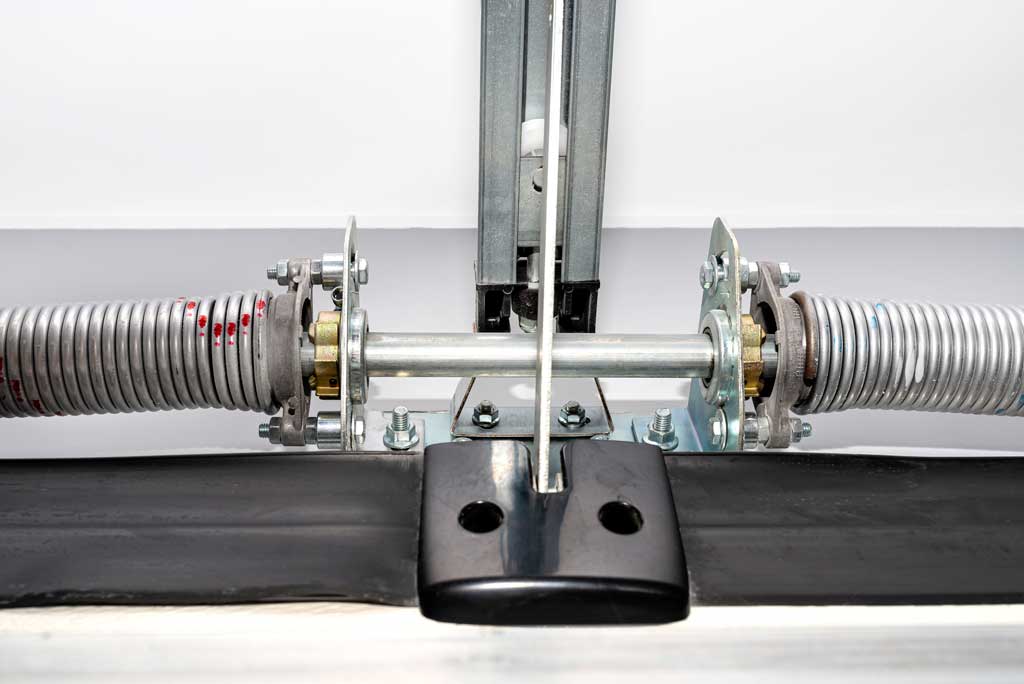
2. Inspect for Loose Bolts and Hardware
Periodically check to make sure nothing is loose or rattling within your garage door assembly. Basic tools are typically all you’ll need to tighten bolts and fasteners that may have loosened with repeated use.
This is an important task because if loose components are allowed to keep getting looser, you might be putting your family’s safety at risk.
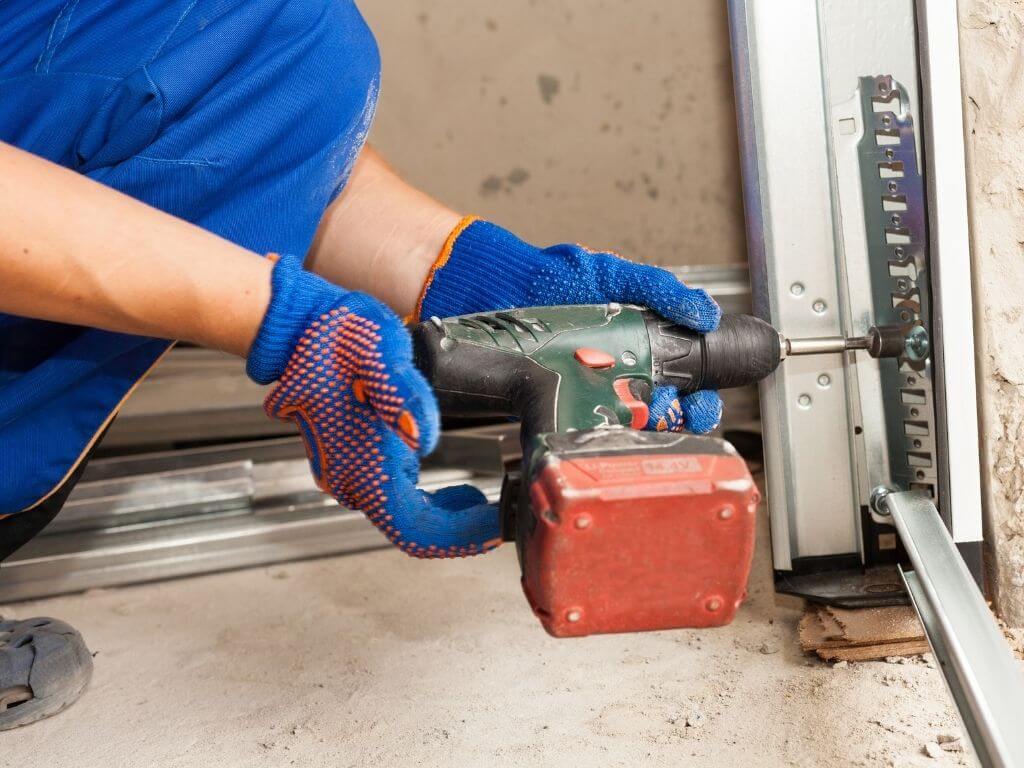
3. Maintain the Weatherstripping
The weatherstripping at the bottom of your garage door helps the door operate properly and protects the contents of your garage. As part of your regular maintenance, wipe down the weatherstripping with a damp cloth or towel to remove dirt and debris that eventually can harm the rubber.
Once it’s clean, use a silicone lubricant to treat the rubber and extend its life. Read lubricant labels and don’t use a formula that contains petroleum, which can harm the rubber.
Replace the weatherstripping if you notice it’s becoming cracked and overly dry. You can buy a kit for this or ask your garage door service company for help.
4. Replace Worn-out Parts
Over time, certain components of your garage door may become worn out or damaged. It’s important to regularly inspect these parts and replace them as needed to ensure the longevity of your garage door.
Commonly worn-out parts include the cables, rollers, and springs. If you notice fraying or signs of wear on the cables, or if the rollers are no longer rolling smoothly, it’s time to replace them. Springs, in particular, are under high tension and can be dangerous to replace on your own, so it’s best to hire a professional garage door technician for this task.
By promptly replacing worn-out parts, you can prevent further damage to your garage door and avoid more costly repairs in the future.
5. Keep the Tracks Clean
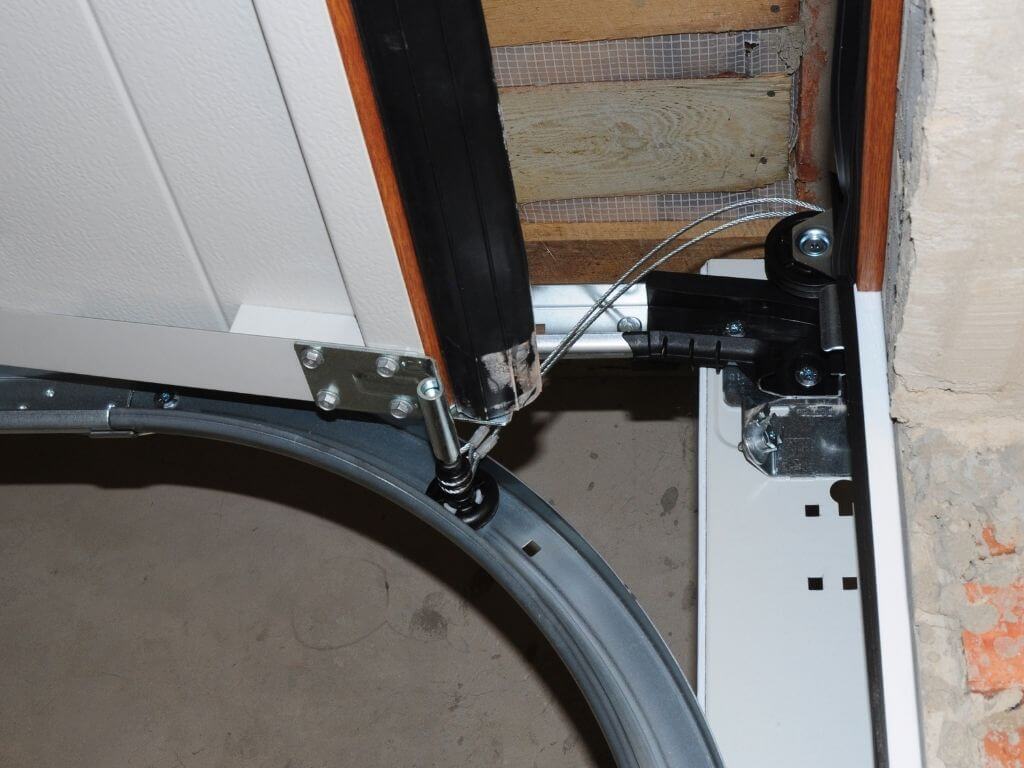
The tracks along which your garage door moves can accumulate dirt, debris, and even small objects over time. Regularly inspect the tracks and clean them to ensure smooth and uninterrupted movement of the door.
Use a damp cloth or sponge to wipe away any dirt or grime from the tracks. Avoid using harsh chemicals or abrasive materials that can damage the tracks. Additionally, check for any obstructions or bent sections of the tracks and address them promptly to prevent further damage to the door.
6. Test the Auto-Reverse
Your garage door is equipped with an important safety feature called the auto-reverse mechanism. This feature ensures that if the door encounters an obstruction while closing, it automatically reverses its direction to prevent accidents or injuries. For this reason, the CPSC recommends testing the auto-reverse mechanism every month.
To test the auto-reverse function, place a small object, such as a roll of paper towels, in the path of the closing door. Then, press the close button on your garage door opener or use the wall-mounted control to close the door. As the door approaches the object, it should detect it and reverse its direction.
If your garage door fails this test or doesn’t reverse properly, it may indicate a problem with the auto-reverse mechanism. In such cases, you should contact a garage door technician to inspect and repair the mechanism.
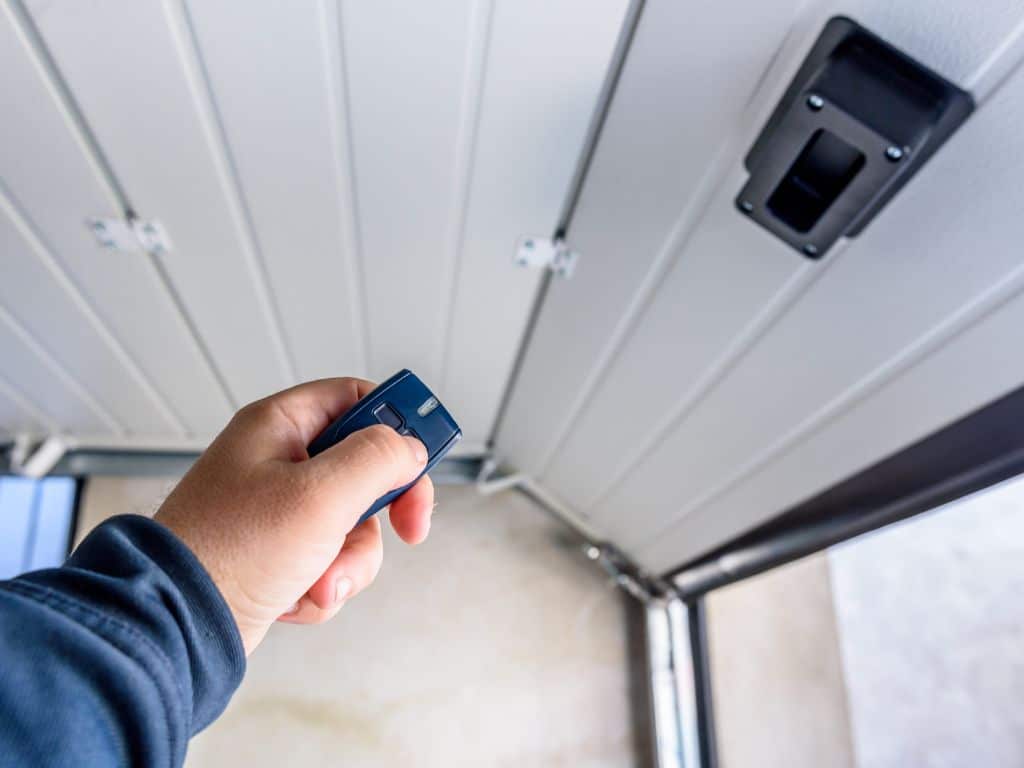
7. Don’t Force the Door Open
Your garage door opener is designed to lift and lower your garage door smoothly and with ease. If you find yourself having to force the door open or closed, it’s a sign that something is wrong with your door or opener. Forcing the door can cause additional damage and put unnecessary strain on the opener, leading to more expensive repairs down the road.
If you notice your garage door is difficult to open or close, first check that no obstructions are blocking its movement. If the path is clear and you still have trouble, call a garage door technician to diagnose the problem and make any necessary repairs.
8. Balance the Door
Proper balance is crucial for the smooth operation and longevity of your garage door. An imbalanced door puts unnecessary strain on the springs and opener, leading to premature wear and potential breakdowns.
Adjusting the balance of a garage door is a task best left to professionals. Contact a qualified garage door technician to adjust the tension on the springs and ensure your door is properly balanced.
9. Keep Garage Door Opener System in Good Condition
It’s also essential to keep your garage door opener in good condition. Here are some tips to help you achieve that:
- Regularly inspect the opener system: Check the opener system for any signs of damage or wear. If you notice any issues, contact a professional technician to address them promptly.
- Clean the opener unit: Over time, dust and debris can accumulate on the opener unit, affecting its performance. Use a soft cloth to gently clean the unit, removing any dirt or grime that may have built up. Be cautious not to get any moisture into the unit, as this can cause damage.
10. Protect Against Harsh Weather

Harsh weather conditions, such as strong winds, can pose a threat to your garage door’s durability and integrity. However, taking proactive measures to protect your garage door from extreme weather can help prolong its lifespan.
If you live in an area prone to strong winds or hurricanes, consider reinforcing your garage door to withstand these forces. High-wind reinforcement kits or storm braces can help protect your door from wind pressure and minimize the risk of it being blown off its tracks. Consult with a professional garage door installer or contractor to determine the best wind mitigation options for your specific location.
11. Clean the Front of Your Garage Door
Cleaning your door a couple of times a year will help prevent staining and keep it looking new. A small amount of dishwashing soap and water usually will do the trick.
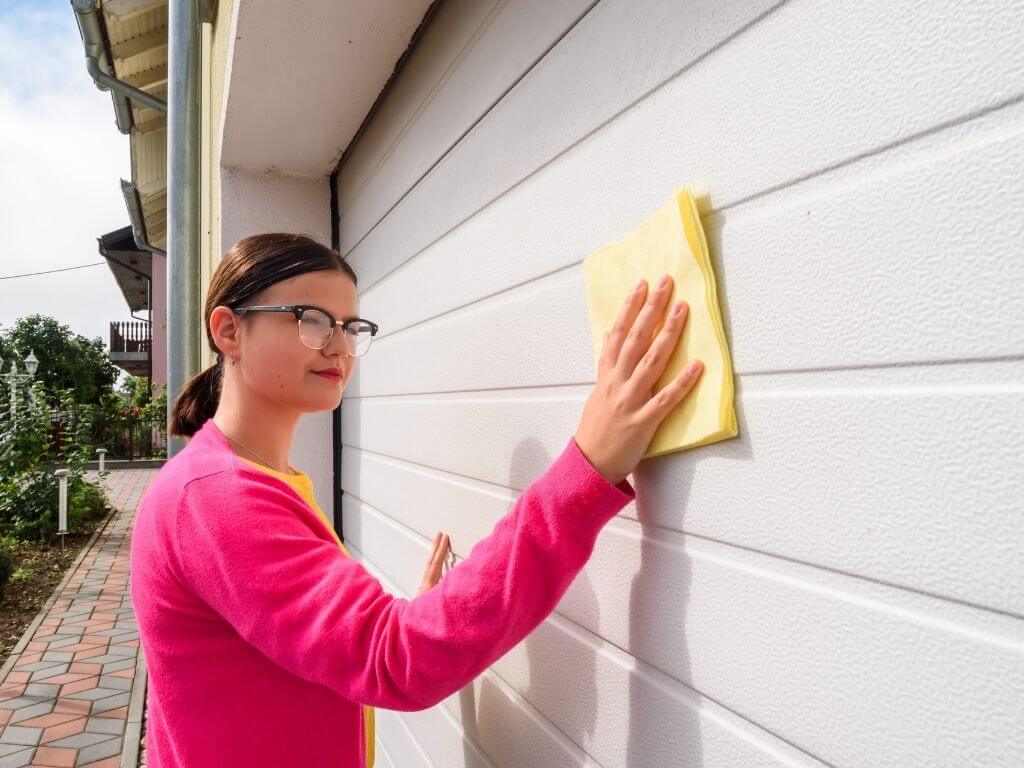
First, hose or brush off the door, then use a soft cloth with the soap solution to clean the entire front surface, including between the slats. If you have stubborn stains, a little oxygen bleach mixed with water and a soft brush should solve the problem. When all the cleaning is done, spray off the door with a hose.
Depending on the materials used to build your garage door, waxing it once a year will help it retain its beauty. Check with your owner’s manual or ask a professional before throwing on the wax.
12. Schedule Professional Inspections
Regular professional inspections are crucial for your garage door’s long-term health and performance. A trained technician can identify potential issues before they escalate into major problems and provide the necessary maintenance to keep your door in optimal condition.
It’s recommended to schedule professional garage door inspections at least twice a year. However, if you notice any unusual noises, difficulty in opening or closing, or other signs of malfunction, don’t hesitate to contact a garage door technician promptly.
Conclusion
These garage door maintenance tips will help you to keep your door looking good and working safely and effectively for many years.
When your door needs more help than you can give it, Safe Way Garage Door Repair & Service of Lakeland, FL, is ready to go to work. Our experienced team provides all types of garage door repairs and component repairs. We also service homes across Polk County and Eastern Hillsborough County.
Let us guide you in all your options for garage door opener systems as well as all the repair and maintenance needs your door may require. Call Florida’s trusted garage door experts at (863) 701–9779.

First Published: Dec 15, 2022
Updated: June 16, 2023


